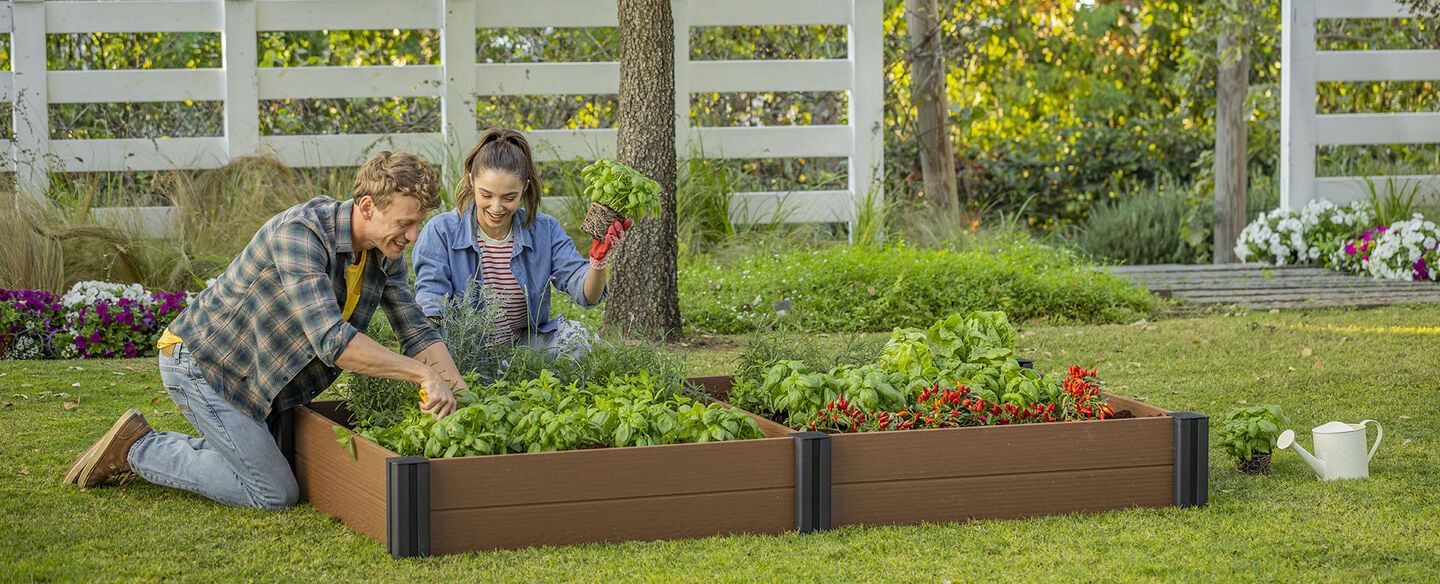
When and How To Prepare Your Garden For Spring
Are you excited to plant a garden next spring? We hear you! There are so many beautiful things about growing your food or flowers. However, growing plants can be fickle. Each plant type has an ideal planting window, the sunlight they need, water, and more. That’s why it's essential to be prepared far before spring planting time comes. Here are a few things to consider as you prepare your garden for spring.
Make a Plan in the Winter Months
It might sound cliche, but you need to have a plan for your garden. This is especially important if you’ll be planting a garden for the first time or doing something new. Start planning this out early. According to Gingham Gardens, “...if you’re planning next year’s garden when it is at its peak, then you don’t have to visualize at all. It’s just so much easier to plan when you can see everything right before your eyes. What better time to plan your flower beds and vegetable gardens for next year than when the plants peak.” Planning early is always best; you can review and finalize your goals in the winter months.
As you prepare your plan, consider the following questions:
- Where will I plant my garden?
- Will I use a raised garden bed?
- Will I need to dig out an area in my yard?
- What kind of plants would I like to grow?
- Do I need to purchase seeds, starters, etc.?
- Will I need to plant seedlings in advance?
By making a plan, you’ll be better prepared to tackle planting your garden on schedule. There’s usually a specific time window when plants must be planted into the ground or in your home as a seedling. If you don’t have everything planned and pre-purchased, you might put off gardening and miss your window. Planting too late can result in no crops or unhealthy ones that don’t produce much. You’ll want to have a finalized plan ready by January/February.
Inventory Your Tools
Whether you’re an experienced gardener or just starting, having the right tools to care for your garden is crucial. You’ll want to make sure you have the following:
- Gardening gloves
- Shovel
- Rake
- Hoe
- Trowel
- Gardening hand tools
- Watering can/Sprinkler
- Soil
- Raised garden bed
You’ll want to carefully review your tools by February, at the latest, and see what you have on hand. Take note of worn or broken tools so you can replace them before planting. There’s nothing worse than getting ready to dig a garden or plant seeds and then realizing that you don’t have the tools to do so.
Decide Where You’ll be Planting
Do you live on a huge lot with plenty of room for growing plants, or is your outdoor space a balcony? You need to take this into account as you decide where to plant. If you have a larger yard, will you dig a garden plot? Consider utilizing raised garden beds. If you have more limited space, some great options would be the Easy Grow Raised Garden Bed or the Urban Bloomer. These would be great indoor or balcony planting options, even if you have a lot of room. Deciding where to house your plants well before planting anything would be best. So, prepare or purchase what you need early for all the benefits.
Be Mindful of Your Soil
The soil in your garden can make or break your plants. Soil can be enhanced with fertilizer and composting, but please make sure this is done before planting. You’ll want to start by ensuring your gardening space is clear of debris like rocks, leaves, dead plants, etc. You’ll want to ensure the soil is loose enough to plant in, so loosen it up before planting. At this point, you’ll want to add fertilizer or compost as needed. Before doing this, however, you might want to figure out your soil type to cultivate the garden better.
Pick the Plants
We touched on this above, but it’s essential to plan out the types of plants you’re hoping to plant. Do you want to grow fruits, vegetables, flowers, etc.? Every plant has an ideal window for planting and growing. This is based mainly on temperatures and how fast or slow the plant grows. So, it’s essential to understand what each plant needs, when it should be planted, and how to best care for it. If you wait until the last minute and throw seeds into the ground, you might not have the most successful garden. So, carefully pick your plants and research how to care for them before planting season.
Talk to an Expert and Do Research
Following the latest planting news is essential, even if you’re a veteran gardener. You’ll probably need to do more research if you're brand new. You can always do research on the internet about the plants that grow best in your area and find varieties that work well for you. If you’d like more information from a knowledgeable person, drive over to your local nursery. Typically people who work at nurseries are well-versed in what grows well, what doesn’t, and common mistakes to avoid. They might even have starter plants, which will be much easier for a new gardener than cultivating plants from seeds. Whatever you want to do, do your research!
We hope this guide has given you a few ideas for preparing a spring garden. If you’re interested in when to plant certain types of plants, read our other blog with a month-to-month guide for planting.

We build in a sustainable manner.
We use innovative technologies and sustainable materials to build planet-friendly products that last a lifetime.







